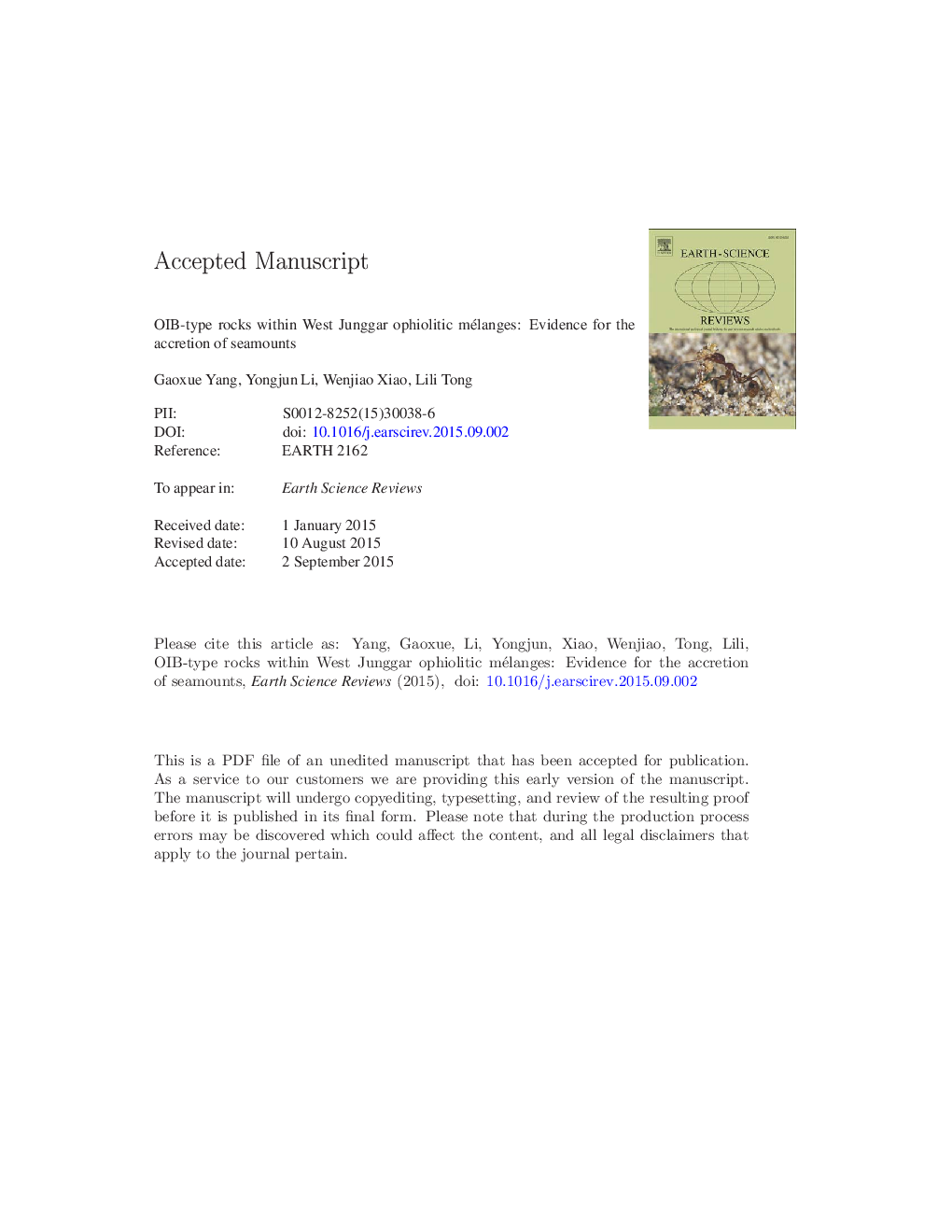| Article ID | Journal | Published Year | Pages | File Type |
|---|---|---|---|---|
| 6442921 | Earth-Science Reviews | 2015 | 83 Pages |
Abstract
The seamounts formed in West Junggar as well as the Paleo-Asian Ocean at Neoproterozoic. With progressive evolution of the Paleo-Asian Ocean, subduction of the oceanic lithosphere commenced during late Cambrian to early Ordovician, resulted in the seamounts eventually accreted in the fore-arc with oceanic fragments forming the Tangbale and Mayile ophiolitic mélanges. As retreat of the subducting slab, the subduction-accretion processes may have continued in the late Paleozoic, given rise to form the Darbut and karamay ophiolitic mélange with the OIB-type rocks from seamounts. Based on our observations, and in combination with previous work, we suggest that the intra-plate magmatism in the CAOB might generally continuous during the development of the Paleo-Asian Ocean from the Late Neoproterozoic to the Mesozoic. Therefore, we present a new model that is multiple intra-oceanic subduction with seamount accretion for the CAOB, which can better explain the tectonic evolution of the CAOB.
Related Topics
Physical Sciences and Engineering
Earth and Planetary Sciences
Geology
Authors
Gaoxue Yang, Yongjun Li, Wenjiao Xiao, Lili Tong,
